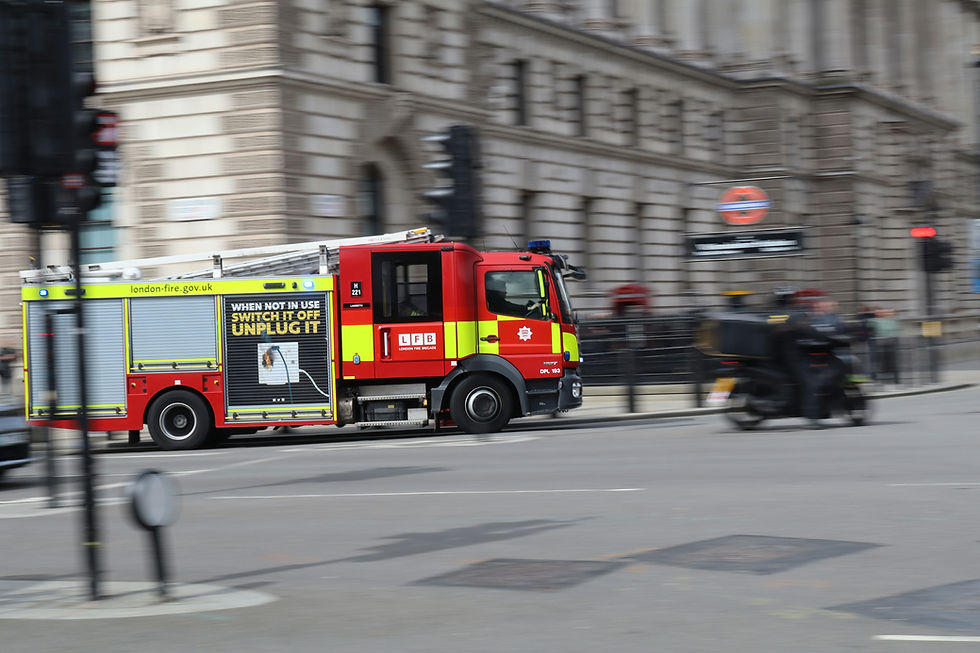Who’s Responsible for Maintaining Firefighter Health and Wellbeing?
- Start Up

- Mar 30
- 4 min read
Updated: Sep 15

Firefighting is undeniably one of the most perilous professions out there. I often highlight this fact in my posts, especially when discussing firefighter fitness. The reality is that a firefighter's physical condition can significantly impact their risk of injury and their effectiveness in saving lives. However, the conversation around fitness goes beyond just achieving peak performance.
The dangers of firefighting stem from various factors, including hazardous environments, unpredictable situations, and the long-term health implications that are increasingly recognised. Research is being conducted to mitigate firefighting-related fatalities, yet a concerning gap remains fitness standards are not consistently enforced across UK Fire and Rescue Services. This inconsistency presents a dilemma.
Some advocate for greater support from fire services to enhance firefighter fitness, while others argue that individual responsibility is key. I’ve even encountered colleagues who feel that training on their off days shouldn’t be an expectation. Given the inherent risks of firefighting and the crucial role fitness plays in safeguarding health and job performance, I've delved into the guidance provided by the National Chiefs Fire Council (NFCC) regarding the responsibilities surrounding the fitness, health, and wellbeing of firefighters in the UK.
In 2016, the Firefighter Fitness Best Practice Guide was released, a collaborative effort by the Department for Communities and Local Government, the Home Office, and the National Joint Council for Local Authority Fire and Rescue Services. This guide aims to address the physically demanding aspects of the firefighter role and to provide essential occupational fitness support.
The guide emphasises that "firefighting is a physically demanding occupation," highlighting the necessity for firefighters to maintain adequate levels of cardiorespiratory fitness, strength, and muscular endurance. These attributes are crucial for safely and effectively performing their duties. It also acknowledges that fitness levels may decline with age, but regular exercise and training can help mitigate this decline.
Given the critical importance of fitness in our profession, especially compared to most other occupations, the question arises: how is this enforced? This inquiry opens up a vital debate within the firefighting community. As a serving firefighter, I have witnessed various perspectives on this issue.
So, what does our role map indicate? Are the guidelines outlined in the fitness guide truly effective?
Section 2 of the report delves into the management of fitness within the fire service. It emphasises that the Joining Working Group (JWG) recognises each firefighter's contractual commitment and responsibility for their own performance, which includes personal health and fitness. While it is ultimately the firefighter’s duty to maintain their fitness, fire services are encouraged to provide support. However, the extent and nature of this support can vary significantly across different services.
For firefighters in the UK, this means that maintaining fitness is primarily your responsibility. Your service should offer assistance, but the specifics depend on your local authority. At a minimum, this support can include access to fitness equipment, dedicated fitness advice from specialists, and regular fitness testing to help you stay on track.
Is This Good Enough?
Personally, I believe the straightforward answer is no. If firefighters were equipped with the knowledge to train effectively—as if everyone were a personal trainer—then this would be sufficient. However, that’s simply not the case, nor should it be expected. Many individuals struggle to improve their fitness or even sustain injuries because they mimic others, lift weights that are too heavy, run at excessive speeds, or attempt movements their bodies are not prepared for. Others may refrain from training altogether due to fears or low confidence stemming from a lack of knowledge. This isn’t their fault.
Firefighters shouldn’t have to master exercise science, biomechanics, or the principles of training just to maintain or enhance their fitness levels. It’s great know, but it shouldn’t be relied upon. If a firefighter lacks understanding about the appropriate reps, sets, and loads to use—or the necessary rest for specific adaptations—merely picking up weights and doing curls won’t suffice. Yet, with the responsibility placed squarely on them to be "firefighter fit," this understanding is crucial.
This is where fire services need to enhance their efforts. While I'm still exploring the best ways to achieve this, it was one of the driving forces behind the launch of START UP, aimed at making individualized programming for firefighters accessible. Furthermore, I believe fire services across the country must take a more proactive approach in supporting and enforcing fitness standards and training. While providing equipment, raising awareness, and displaying informative posters are important steps, they fall short of what’s truly needed.
The military sets a strong example in this regard. From day one, service members are focused on developing and improving their fitness, making it an integral part of their routine. I feel the fire service could learn from this model and implement similar strategies to better maintain and enhance the fitness of its personnel.
What are your thoughts on this topic? Do you agree or disagree with the points raised? Are there specific strategies or ideas you believe fire services can implement to enhance and enforce fitness standards across the sector? I’d love to hear your insights—please share your comments below!
To access the Firefighter Fitness Best Practice Guide, download from our quick links section here


Comments